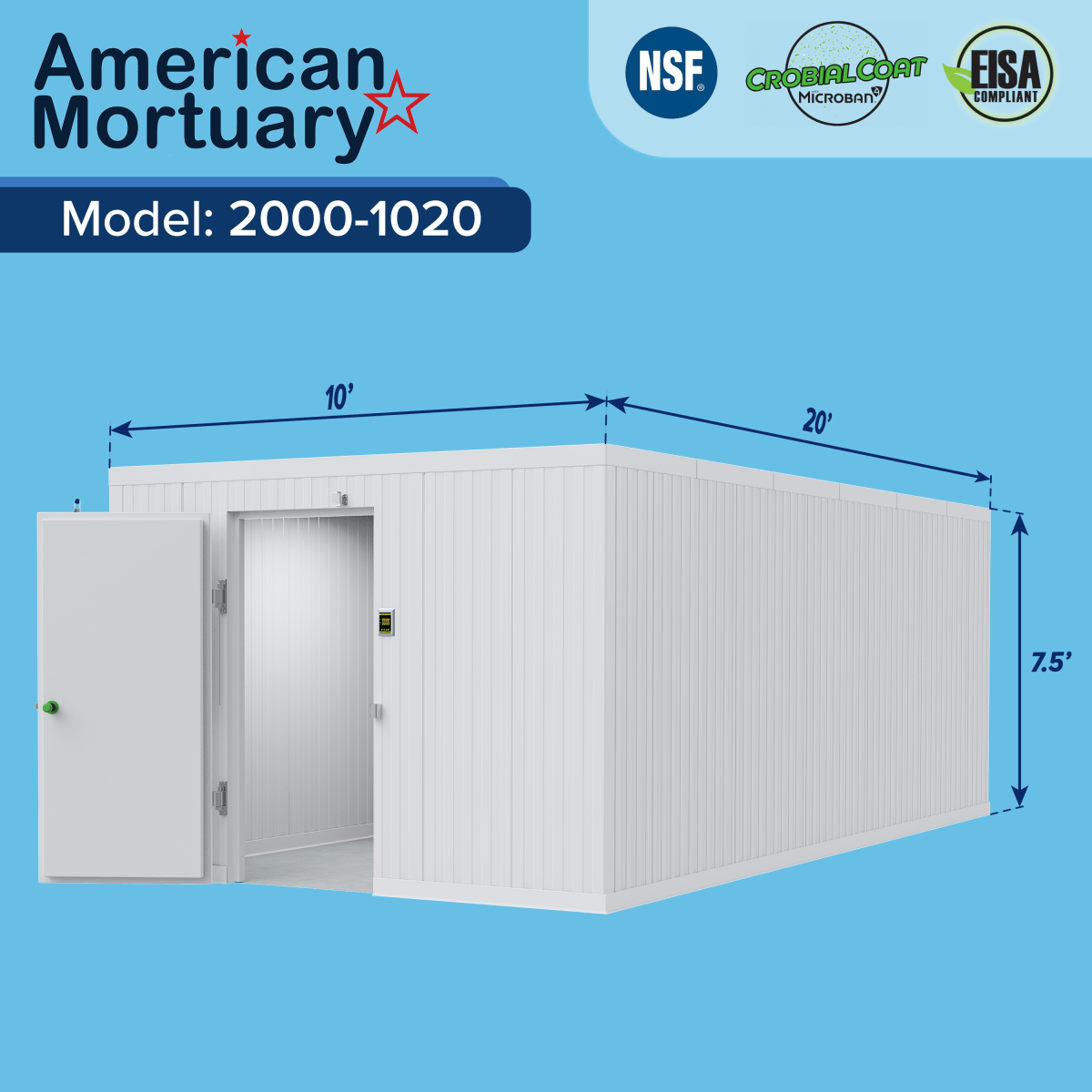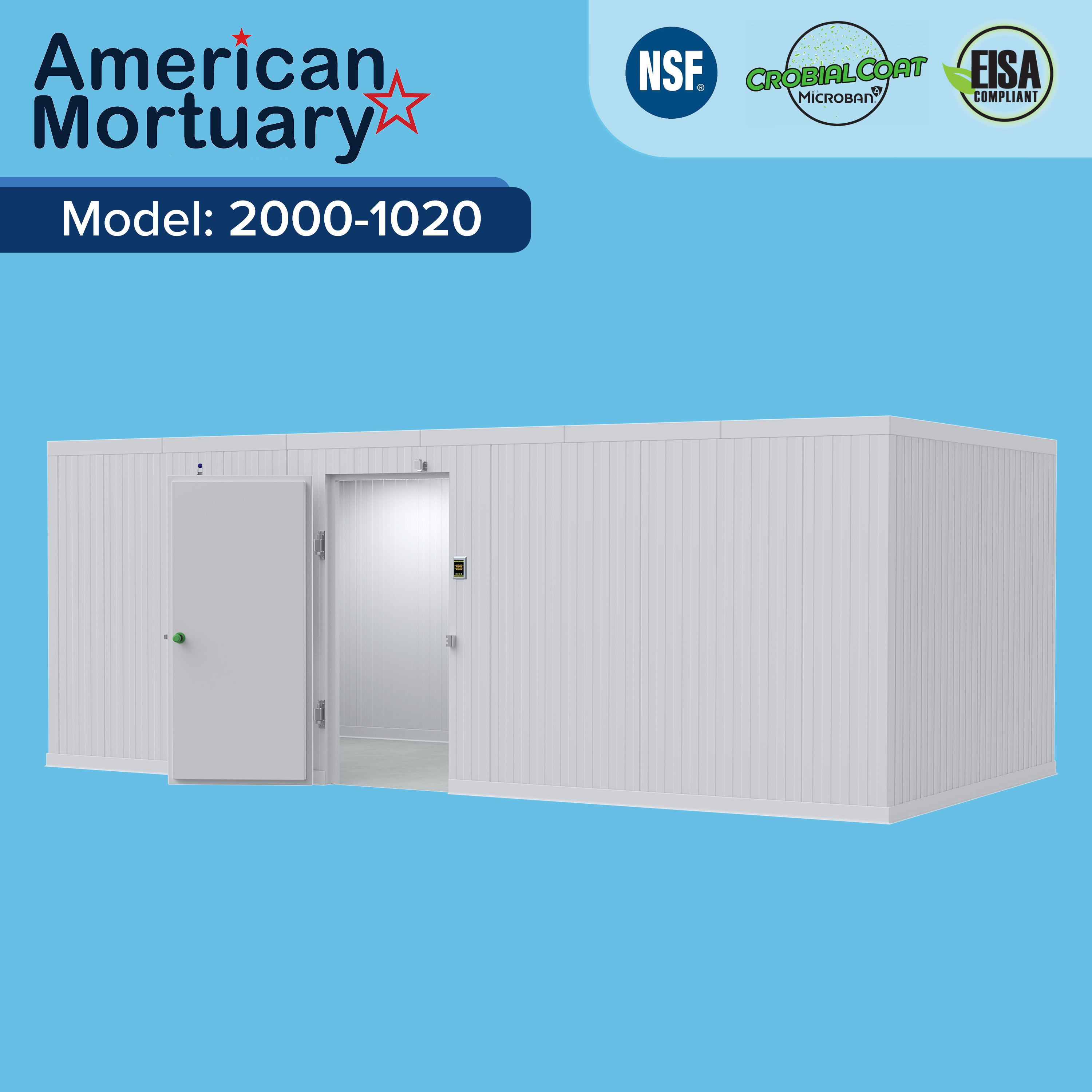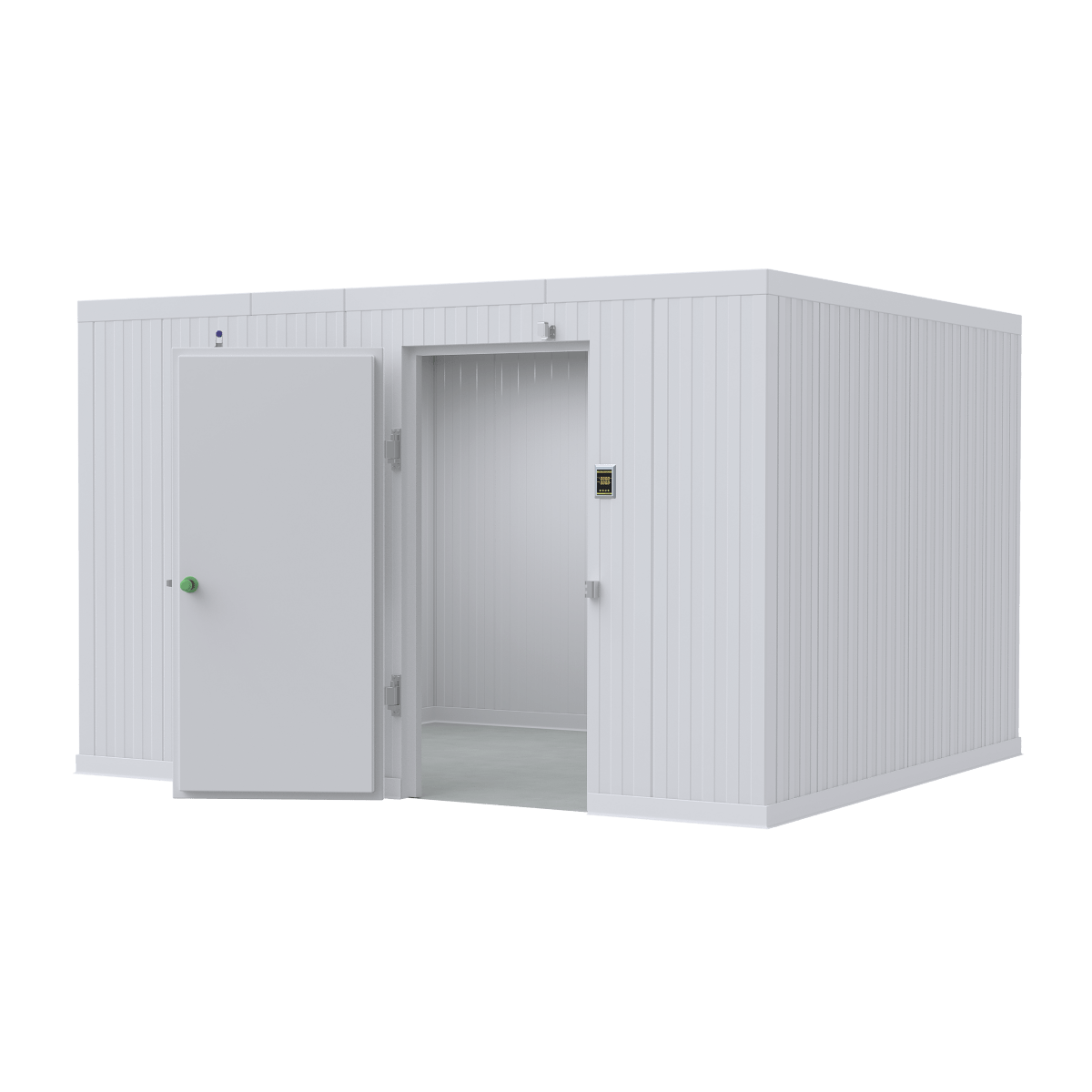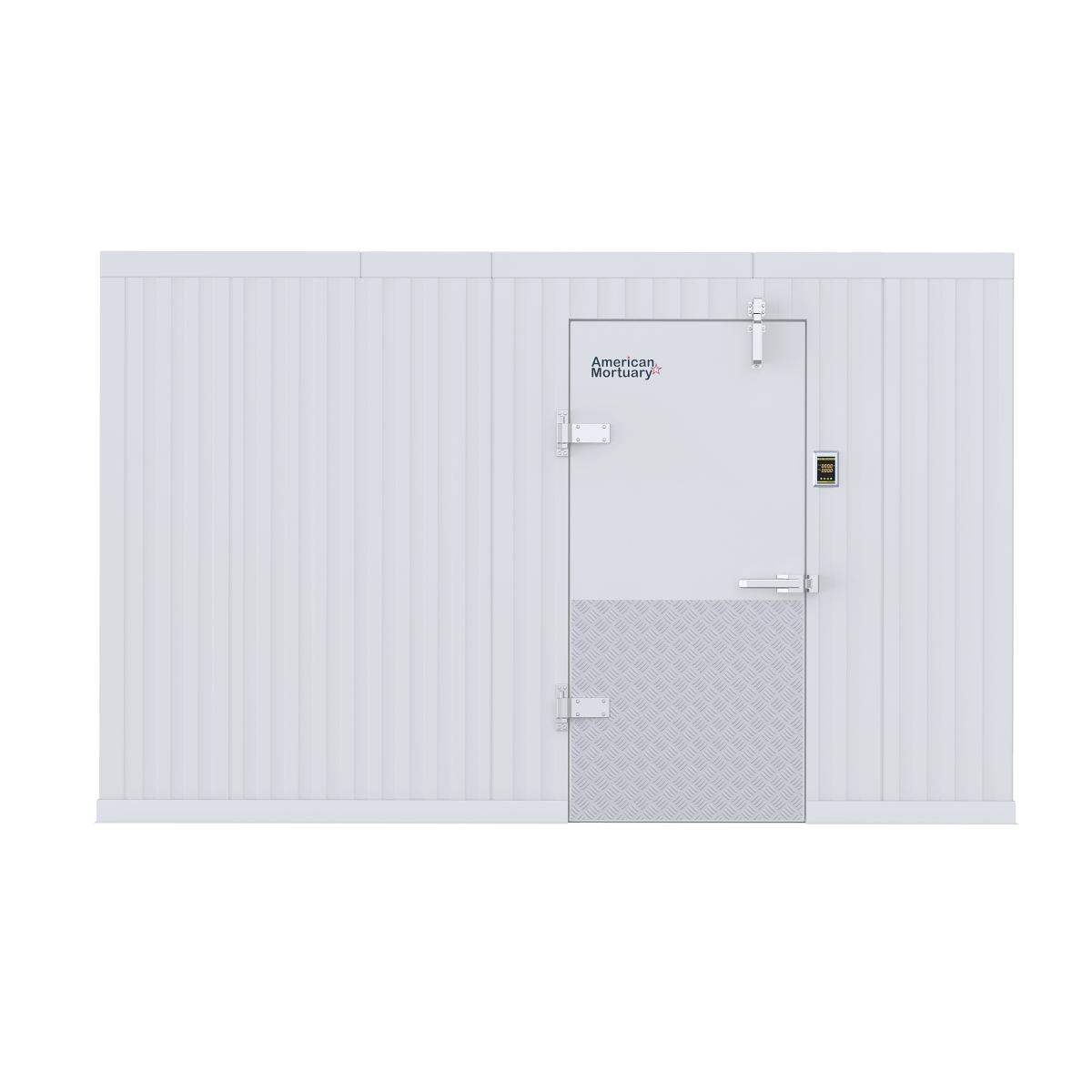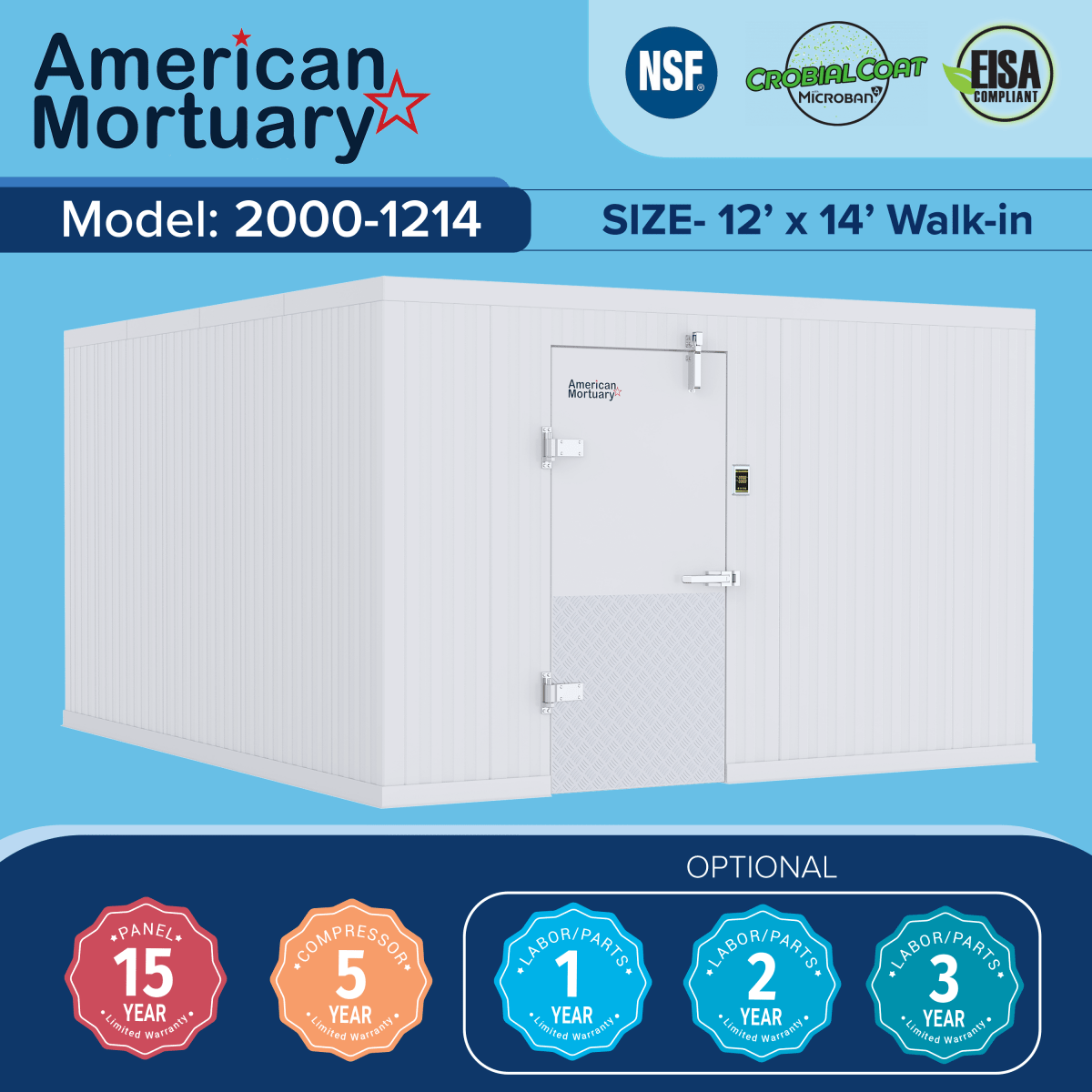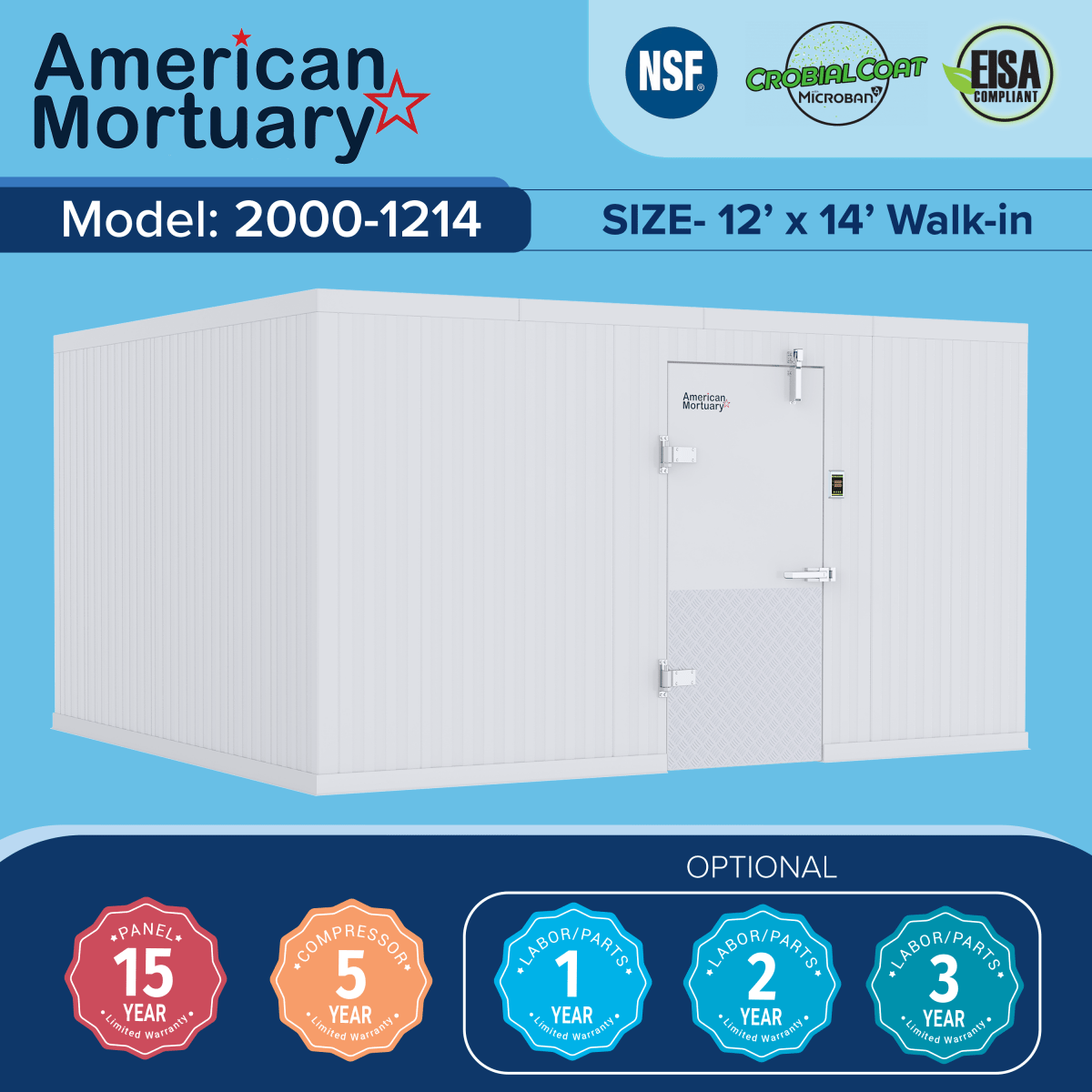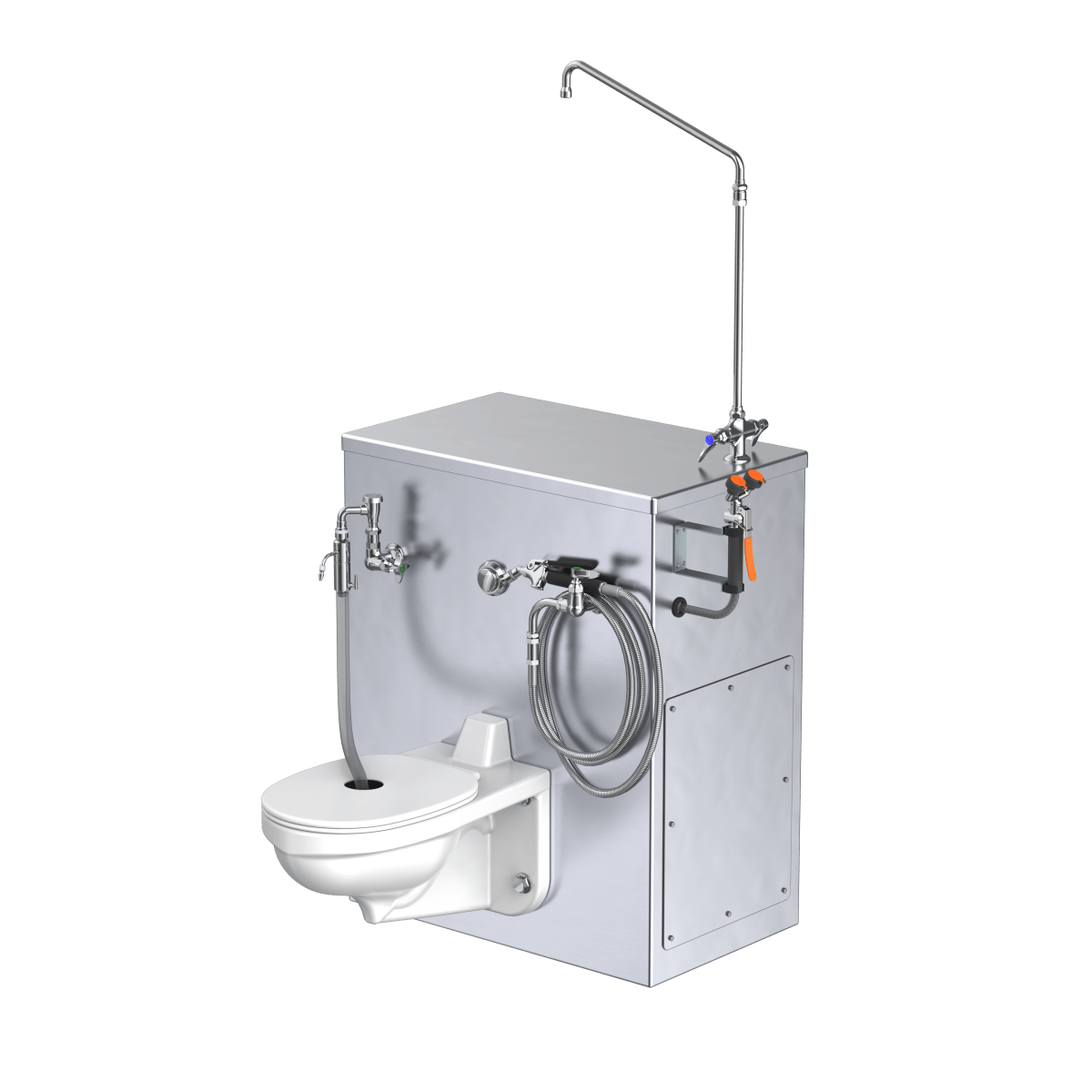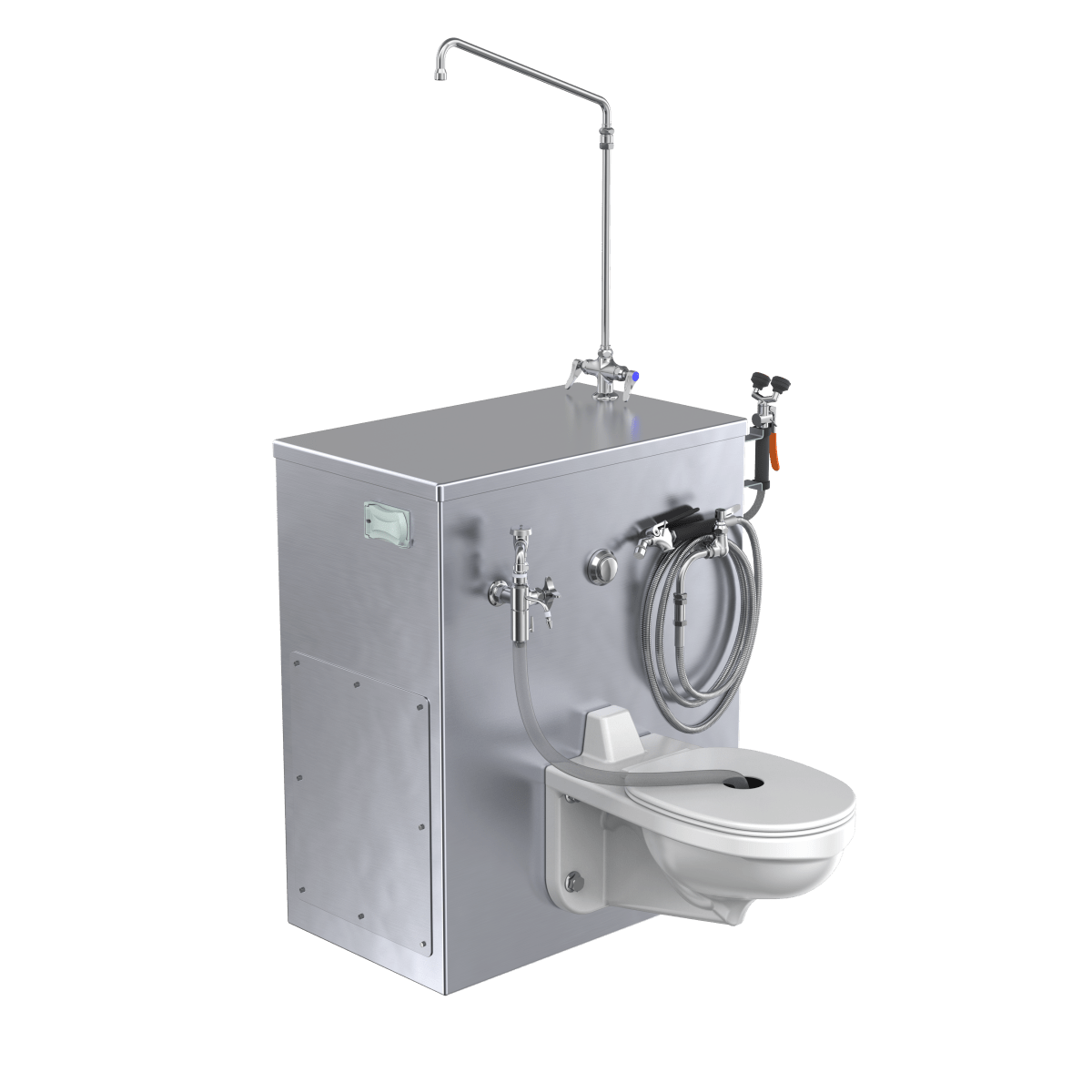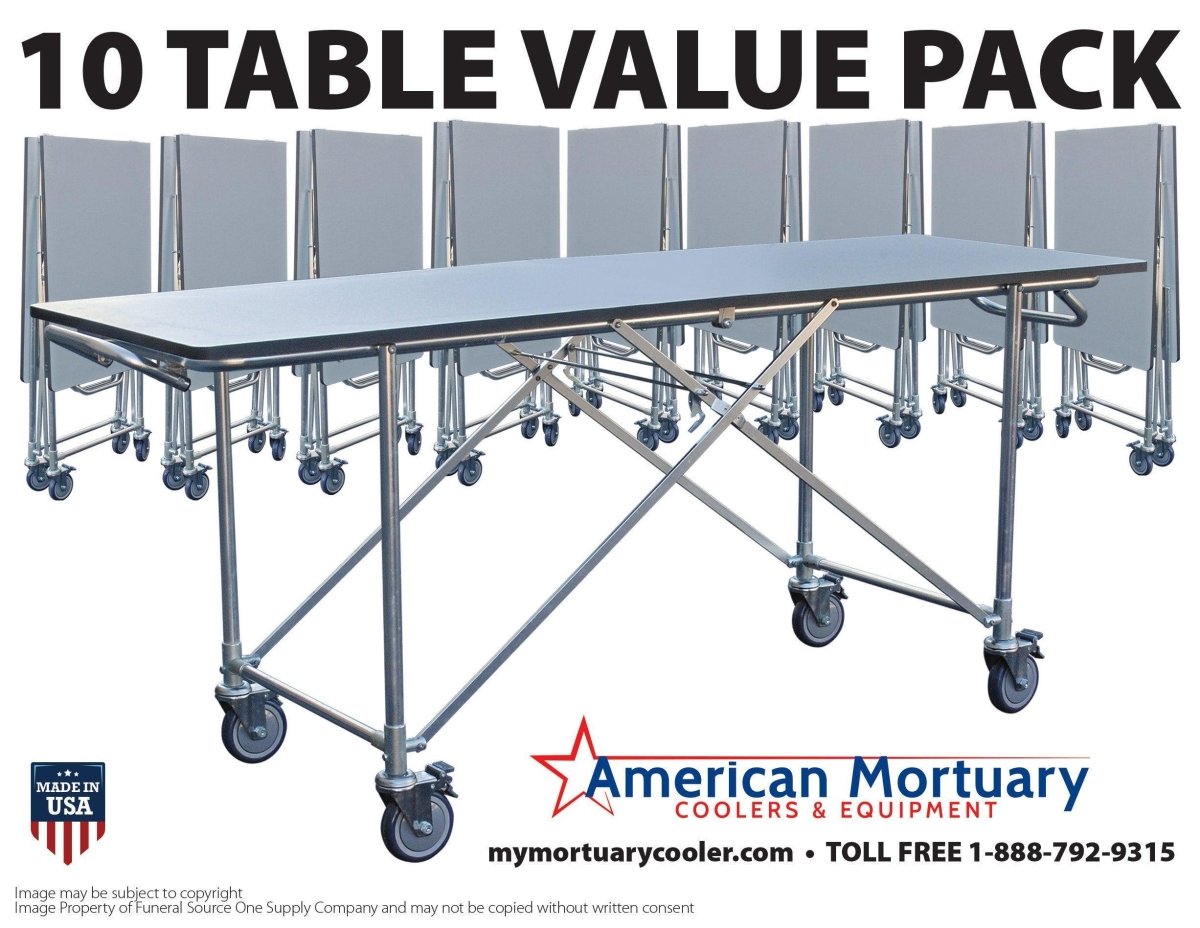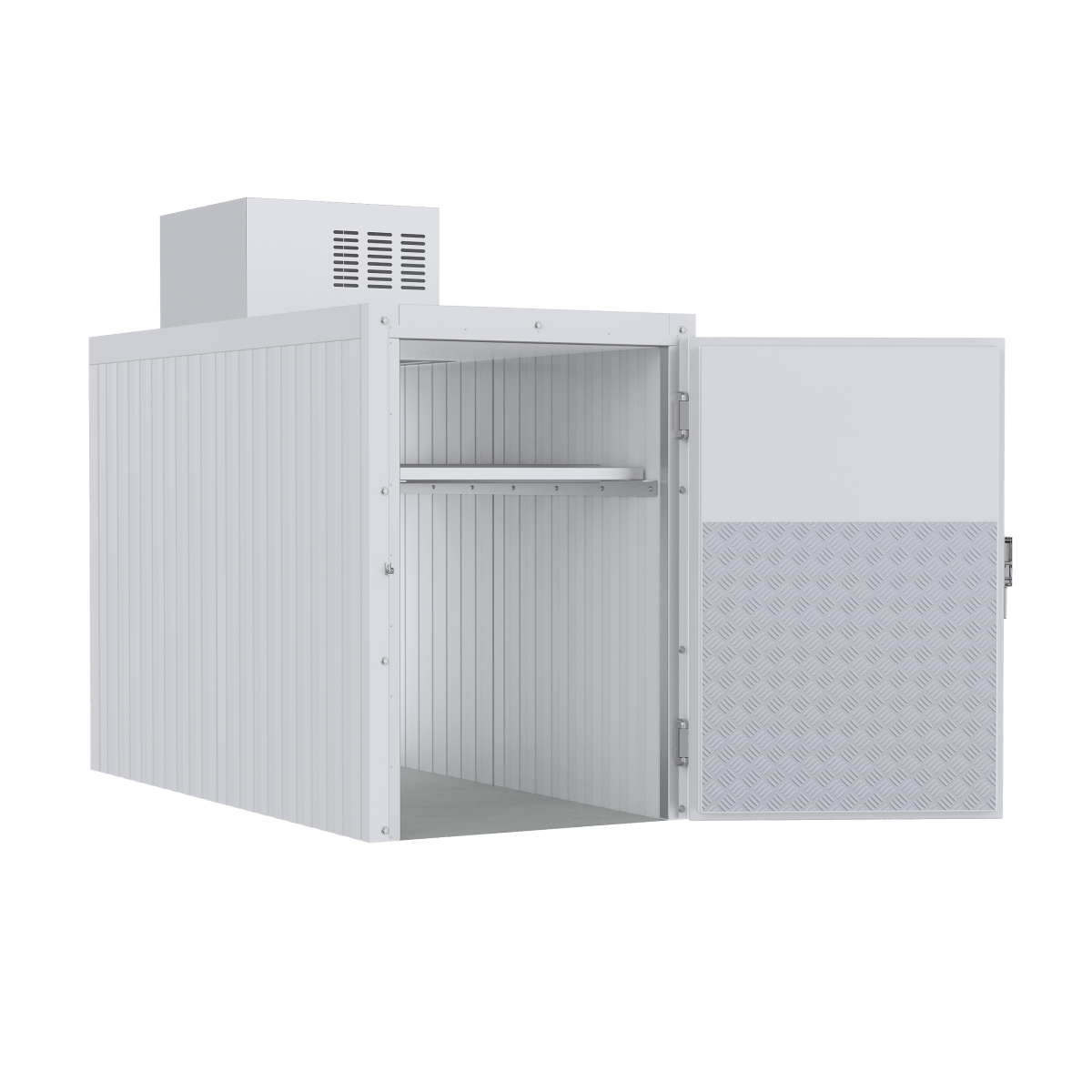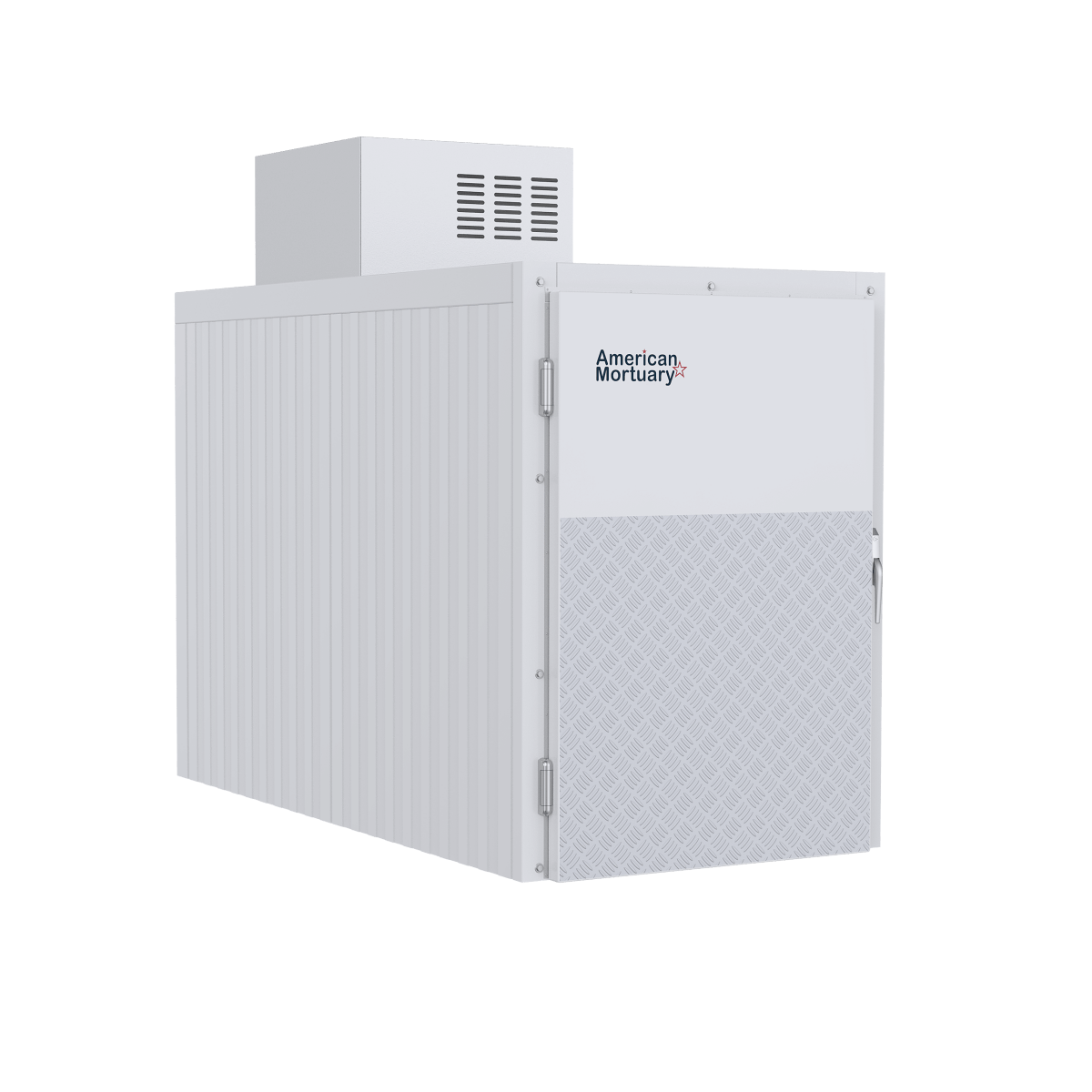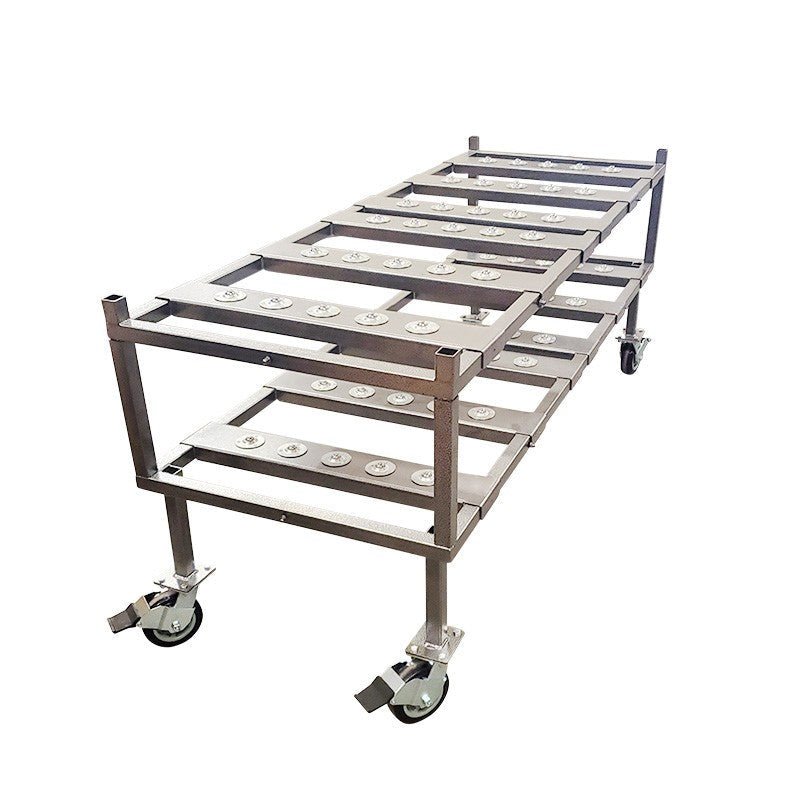The Critical Balance: Proper Morgue Freezer Temperature
When a loved one passes away, families place enormous trust in funeral professionals to provide care that's both dignified and respectful. Behind the scenes, one detail makes all the difference: temperature control.
Morgue freezer temperature typically ranges from -10°C to -20°C (14°F to -4°F), while standard morgue coolers maintain a gentler 2°C to 4°C (36°F to 39°F). This might seem like just numbers on a thermostat, but these carefully calibrated ranges are actually the foundation of preserving dignity and giving families the precious gift of time to make arrangements without pressure.
The difference between these two preservation methods isn't just academic—it directly impacts how long remains can be respectfully maintained:
| Storage Type | Temperature Range | Typical Storage Duration | Primary Use |
|---|---|---|---|
| Morgue Freezer | -10°C to -20°C | Months to years | Long-term storage, forensic cases |
| Morgue Cooler | 2°C to 4°C | 1-2 weeks | Short-term storage, viewing preparation |
At the molecular level, every 10°C drop in temperature reduces decomposition rates by approximately half. This means the difference between room temperature and a properly maintained morgue freezer temperature represents slowing decomposition by a factor of eight or more – essentially preserving remains in a stable condition for significantly longer periods.
As Dr. James Mitchell, forensic pathologist, often tells our team: "At refrigeration temperatures, decomposition is slowed but continues. At freezing temperatures, the process is nearly halted, allowing for much longer preservation periods."
The choice between refrigeration and freezing balances practical needs with compassionate care. While refrigeration is perfect for short-term preservation during funeral arrangements (typically 1-2 weeks), freezing becomes essential for unidentified remains, long-term storage needs, cultural practices requiring extended delays, or situations where investigation timelines are uncertain.
Here at American Mortuary Coolers, we've designed morgue freezer temperature control systems for funeral homes across America. What we've learned is that reliable temperature control isn't just about technology—it's about providing peace of mind to both professionals and the families they serve.

Know your morgue freezer temperature terms:
Morgue Freezer Temperature Standards & Cooler Comparison
When it comes to preserving dignity after death, temperature isn't just a number—it's a crucial factor that determines how we honor the departed. The morgue freezer temperature standard typically ranges from -10°C to -20°C (-4°F to 14°F), what professionals call "negative temperature" storage. This stands in contrast to standard morgue coolers, which operate in the "positive temperature" range of 2°C to 4°C (36°F to 39°F).
Sarah Jenkins, a hospital morgue technician with over 15 years of experience, puts it in perspective: "The temperature distinction isn't just a technical detail. Hospital morgues are designed for efficiency and quick turnover. We maintain our refrigeration units at a consistent 3°C, which gives families adequate time to make arrangements without the complications that come with freezing and thawing bodies."
Choosing between a freezer and cooler involves balancing several practical considerations:
| Factor | Morgue Freezer (-10°C to -20°C) | Morgue Cooler (2°C to 4°C) |
|---|---|---|
| Preservation Duration | Months to years | 1-2 weeks |
| Energy Consumption | 25-40% higher | Lower, more efficient |
| Thawing Requirements | Requires 24-48 hour controlled thawing | None needed |
| Tissue Impact | Potential for freeze damage | Minimal tissue changes |
| Cost | Higher initial and operating costs | More economical |
| Primary Applications | Forensic, unidentified remains, long-term storage | Standard funeral home operations |
The difference in energy consumption is particularly notable. Freezers typically require 25-40% more electricity than positive-temperature coolers—a consideration that affects both your monthly bills and environmental footprint.
When to Choose a Freezer over a Cooler
There are times when the deeper preservation of a morgue freezer temperature becomes not just preferable but necessary:
For unidentified remains, freezing provides the gift of time. Forensic pathologist Mark Stevenson explains, "For unidentified remains, we use -15°C storage. This essentially suspends decomposition indefinitely, giving investigators the time they need to establish identity."
When remains are part of a criminal investigation, they become long-term evidence that may need preservation for months or even years. The colder morgue freezer temperature ensures that evidence integrity remains uncompromised throughout extended legal proceedings.
During mass-fatality incidents like the COVID-19 pandemic, many cities found themselves deploying refrigerated trucks set to freezer temperatures when deaths exceeded normal capacity. These lower temperatures allowed facilities to manage surges with dignity.
Some families face cultural or religious delays that require waiting for loved ones to travel internationally before proceeding with funeral services. Frank Reynolds, a Florida funeral director, shares a touching perspective: "Every arrangement felt rushed before proper cooling – now we give families the gift of time."
Here at American Mortuary Coolers, we've noticed more funeral homes installing dual-temperature systems—standard coolers for everyday needs with dedicated freezer sections for special circumstances. This flexibility allows them to serve diverse community needs with compassion.
Optimal Morgue Freezer Temperature Settings
While the general range for morgue freezer temperature spans from -10°C to -20°C, finding the optimal setting depends on your specific preservation goals:
For medium-term preservation measured in months, -10°C to -15°C (14°F to 5°F) typically provides the right balance of preservation and energy efficiency.
When long-term preservation extending to years becomes necessary, -15°C to -20°C (5°F to -4°F) offers more complete preservation of tissues.
Specialized forensic and research facilities often maintain temperatures below -20°C (below -4°F) for maximum preservation of biological evidence.
Dr. Rebecca Chen, a forensic anthropologist who works with challenging cases, explains her approach: "In our forensic lab, we maintain freezers at -25°C to ensure optimal preservation of biological evidence. At this temperature, even the most sensitive biological markers remain stable for years."
Today's modern morgue freezers feature digital controls allowing precise temperature adjustments within 0.5°C—precision that matters because fluctuations can compromise tissue integrity. Most units also include adjustable alarm thresholds, typically set to alert staff when temperatures rise 3-5°C above the target.
For our clients in warmer southern regions like Atlanta, Dallas, and Los Angeles, we recommend setting freezers slightly colder (-18°C to -20°C) to account for potential temperature rises during door openings in high-humidity environments.
The Science: How Temperature Impacts Preservation & Investigation
The science behind morgue freezer temperature reveals why precise control is so critical for preservation. At the cellular level, freezing temperatures dramatically slow two key processes: enzymatic activity and bacterial growth.
When a body is maintained at standard morgue freezer temperature (-10°C to -20°C), enzymatic activity drops to nearly undetectable levels. These enzymes, which would otherwise break down tissues after death (autolysis), become dormant. Similarly, bacterial activity—the primary driver of decomposition—essentially halts at these temperatures.

I recently spoke with Dr. Michael Torres, a pathologist who specializes in post-mortem intervals. He shared something fascinating: "Each 10°C drop in temperature reduces decomposition rates by about half. So the difference between room temperature and a morgue freezer represents slowing decomposition by a factor of eight or more." It's like pressing pause on nature's processes.
This temperature-dependent preservation impacts so many aspects of afterlife care. DNA integrity remains viable for years when properly frozen instead of degrading quickly at room temperature. Odor control becomes much more manageable as those volatile compounds develop slowly, helping maintain dignity for the deceased and creating better working conditions for staff. The freezing temperatures also provide contamination prevention by inhibiting the growth of potential pathogens.
When medical examiners investigate time of death, they must carefully account for the temperature history of remains. Freezing essentially "pauses" the biological clock, which is why detailed documentation of when freezing began is so important for Post-Mortem Interval (PMI) accuracy.
I was touched when reading the International Committee of the Red Cross guidelines that emphasize proper refrigeration as not just technical but deeply ethical, noting that "dignified management of the dead is one of the three key pillars of humanitarian forensic action." At American Mortuary Coolers, we couldn't agree more.
Decomposition Timelines at Different Temperatures
Understanding how temperature affects decomposition helps explain why morgue freezer temperature standards exist:
| Temperature | Decomposition Timeline | Preservation State |
|---|---|---|
| Room temp (20°C/68°F) | Visible changes within hours | Rapid deterioration |
| Cooler (2-4°C/36-39°F) | 1-2 weeks | Slowed but continuing decomposition |
| Freezer (-10°C to -20°C) | Months to years | Nearly halted decomposition |
| Ultra-cold (-50°C/-58°F) | Indefinite | Complete preservation (research only) |
For funeral homes, these timelines translate to real-world choices. At standard refrigeration temperatures (2-4°C), families typically have about 1-2 weeks for services without requiring embalming. The body remains in viewable condition during this window, providing precious time for goodbyes.
At morgue freezer temperature (-10°C to -20°C), we can preserve remains for months or even years. But there's an art to the process. Maria Rodriguez, who's been working with mortuary equipment for decades, shared some wisdom with me: "The thawing process is as important as the freezing. Controlled, gradual thawing in refrigerated conditions over 24-48 hours produces much better results than rapid thawing."
One important caution we always share with our clients: avoid multiple freeze-thaw cycles whenever possible. When cells freeze, their membranes rupture, releasing cellular enzymes. Upon thawing, these enzymes can actually accelerate decomposition more than if the body had never been frozen. This is why we recommend proper planning for a single freeze-thaw cycle when possible.
Forensic Benefits of Stable Morgue Freezer Temperature
For forensic investigations, the benefits of stable morgue freezer temperature go well beyond basic preservation. I've worked with many medical examiners who rely on precise temperature control for crucial evidence preservation.
Toxicological analysis becomes much more reliable when drugs and their metabolites are preserved by freezing. Without proper freezing, these compounds break down at varying rates, potentially compromising test results. Similarly, trauma pattern clarity is maintained when freezing helps preserve wound characteristics and tissue discoloration that might otherwise be lost to decomposition.

I'll never forget what Dr. Jameson, a forensic pathologist at a major urban medical examiner's office, told me during an installation: "In my forensic cases, our temperature logs aren't just maintenance records – they're legal documents." That's why chain-of-evidence documentation has become so important, with temperature logs becoming part of the legal record in forensic cases.
This forensic importance has driven many medical examiner offices to invest in advanced monitoring systems. These don't just maintain the morgue freezer temperature but also create unalterable logs that can be presented in court if evidence integrity is questioned.
The science is clear: proper temperature control isn't just about technology—it's about preserving dignity, evidence, and truth. It's why we at American Mortuary Coolers take such pride in the precision of our systems.
Scientific research on corpse refrigeration
Maintaining & Monitoring Morgue Freezer Temperature: Technology, Costs, Best Practices
Keeping a morgue freezer temperature steady isn't just about having a good freezer—it's about combining the right technology with smart practices. Today's morgue freezers have come a long way from the basic units many of us remember from years past.
The heart of modern freezer systems includes digital thermostats that can maintain temperatures within half a degree of your target setting. These work alongside remote sensors placed throughout the freezer to ensure every corner stays properly cooled—no more warm spots that could compromise preservation.
"I used to wake up in the middle of the night worrying about our cooler temperatures," shares Tom, a funeral director from Memphis who recently upgraded his equipment. "Now with our new system's text alerts, I actually sleep through the night!"
One of the biggest advances has been variable-speed compressors, which adjust their cooling output based on need rather than simply turning on and off. This not only keeps temperatures more stable but can reduce your energy bill by up to 30%. Paired with high-R-value insulation (today's best systems use closed-cell foam with R-values of 37.6 or higher), these improvements significantly reduce both heat transfer and operating costs.
Power outages used to be a major nightmare for morgue operators, but modern systems now include automatic transfer switches that connect to emergency generators. This ensures continuous operation even when the rest of the neighborhood goes dark.
Even the defrost cycles have gotten smarter, running only when needed and carefully maintaining internal temperatures during the process.
"Temperature stability is everything in our business," notes a funeral director from our Florida region. "After experiencing a cooler failure during a heatwave that cost us $15,000 in emergency transfers, we invested in a system with redundant compressors and 24/7 monitoring. It's been worth every penny."
While freezers typically use 25-40% more electricity than standard coolers, this gap narrows considerably with proper equipment selection and operation. At American Mortuary Coolers, we've helped funeral homes across the country cut their energy costs by a third or more after upgrading to more efficient systems.
Hardware & Software That Keep Temperatures Consistent
The magic behind consistent morgue freezer temperature happens when hardware and software work together seamlessly:
Modern freezers use Programmable Logic Controllers (PLCs)—essentially industrial-grade computers—to manage everything from compressor operation to defrost cycles. These controllers are built for reliability in critical situations where failure simply isn't an option.
Cloud-based alert systems have been a game-changer for many of our clients. These systems connect to the internet and send instant notifications via text and email if temperatures start drifting outside safe ranges, giving staff time to address issues before they become emergencies.
Dual-evaporator designs use multiple cooling coils to maintain more uniform temperatures throughout the freezer. This approach also provides valuable redundancy—if one evaporator needs servicing, the other keeps working.
Perhaps most important for both operational and legal purposes is automatic data logging. These systems record temperature data every 5-15 minutes, creating a permanent record that can prove invaluable for both quality control and documentation.
One Memorial Hospital we worked with maintained temperatures below 42°F for 8 hours during Hurricane Ian until their generator could be started, thanks to a well-insulated freezer with advanced monitoring that alerted staff before temperatures reached critical levels.
Energy & Operational Cost Strategies
Running a morgue freezer at optimal morgue freezer temperature doesn't have to break the bank. Several practical strategies can significantly reduce your costs:
Upgrading from standard 4-inch insulation panels (R-28) to 5-3/8-inch panels (R-37.6) typically cuts energy use by 15-20%. It's a simple upgrade with substantial returns.
Door gaskets might seem minor, but they're actually critical. Daily inspection and regular replacement of these seals prevents cold air leakage—one of the most common causes of wasted energy and temperature fluctuations.
Staff training on door-opening discipline makes a surprising difference too. Simply minimizing how often and how long freezer doors stay open can dramatically reduce energy consumption. Some of our clients have implemented pass-through designs to avoid opening the main freezer door for routine access.

Smart placement of condensing units can boost efficiency by 10-15%, especially in hot climates. When we install systems in places like Texas or Florida, we always recommend locating these units in cooler, north-facing or shaded areas.
Don't underestimate the power of basic maintenance. Regularly cleaning condenser coils, checking refrigerant levels, and ensuring proper airflow keeps your system running at peak efficiency.
The good news? A comprehensive energy efficiency upgrade typically pays for itself within 2-5 years through lower utility bills, while also improving temperature stability and system reliability. It's a win-win for both your budget and your peace of mind.
More info about safety protocols
Compliance, Ethics & FAQs about Morgue Freezer Temperature
When it comes to morgue freezer temperature, there's much more to consider than just turning a dial. Behind every technical specification lies a web of regulations, ethical considerations, and human concerns that guide our industry.
Several regulatory bodies provide guidelines that facilities must follow. OSHA focuses primarily on keeping workers safe, including preventing exposure to biohazards through proper preservation. State Health Departments often specify exact temperature ranges, though these requirements can differ significantly depending on where you're located. The CDC offers infection control guidelines that include recommendations for handling and storing deceased individuals, while the College of American Pathologists (CAP) sets accreditation standards that include specific temperature monitoring requirements for medical examiner facilities.
"The technical aspects of refrigeration are important, but they're just one piece of a much larger picture," explains James Wilson, a funeral director with over 20 years of experience. "We've seen a significant increase in families requesting refrigeration over embalming in recent years. Many cite environmental concerns or religious preferences."
These cultural and religious considerations have become increasingly important in our diverse society. Many traditions have specific requirements regarding care of the deceased—some prohibit embalming entirely but allow refrigeration, making proper morgue freezer temperature management essential for honoring these beliefs with dignity and respect.
Staff training represents another crucial element that bridges technical knowledge with compassionate care. Everyone working with refrigeration systems should understand proper temperature monitoring procedures, emergency protocols for when temperatures drift outside acceptable ranges, appropriate PPE for working in cold environments, and above all, respectful handling practices regardless of the preservation method chosen.

At American Mortuary Coolers, we don't just install equipment and walk away. We provide comprehensive training when setting up new systems, ensuring staff understand both the technical aspects of maintaining proper temperatures and the ethical importance of their work.
FAQ #1 – What happens if the freezer rises above –10°C?
When a morgue freezer temperature rises above the recommended minimum of -10°C (14°F), several concerning issues begin to develop. Most immediately, decomposition accelerates as enzymatic and bacterial activity increases. This acceleration is often more pronounced in previously frozen tissue due to cell membrane damage from the freezing process.
You'll also notice odor development as volatile compounds associated with decomposition form more rapidly at higher temperatures. While still below standard refrigerator temperatures, the -5°C to 0°C range can allow some microbial activity to resume, potentially compromising both tissue quality and worker safety.
For forensic specimens, even temporary temperature excursions can damage evidence quality. And depending on local requirements, these temperature shifts may violate health codes or accreditation standards your facility needs to maintain.
If you notice temperatures rising, act quickly: verify the reading with secondary thermometers, minimize door openings, check for obvious issues like an unplugged unit or door left ajar, and contact refrigeration service if temperatures continue to climb. Be sure to document how long the excursion lasted and the highest temperature reached.
"During Hurricane Ian, we lost power for three days," shares one funeral director from Florida. "Our backup generator failed too, but because we had temperature alerts set up, we were able to transfer remains to another facility before any damage occurred. Those alerts literally saved us thousands of dollars and preserved our reputation in the community."
FAQ #2 – How long can a body stay at morgue freezer temperature?
When maintained at proper morgue freezer temperature (-10°C to -20°C), remains can be preserved for remarkably long periods. For standard preservation needs, bodies can typically be stored for 6-12 months with minimal degradation. In forensic cases requiring even longer storage, optimal conditions (-15°C to -20°C) can extend preservation to years with proper documentation and monitoring. Research facilities using ultra-low temperatures (below -50°C) can preserve specimens almost indefinitely.
However, extended freezing creates challenges when remains eventually need to be thawed. "The thawing process is just as important as the freezing," explains Maria Rodriguez. "Controlled, gradual thawing in refrigerated conditions over 24-48 hours produces much better results than rapid thawing."
The process typically involves transferring remains from the freezer to a refrigerator (2°C to 4°C) for 24-48 hours, followed by gradual warming to room temperature in a controlled environment. Careful monitoring throughout this process is essential for maintaining tissue integrity.
For funeral homes, we generally recommend freezing only when necessary due to these complications. However, for unidentified remains or cases with legal holds, freezing at proper morgue freezer temperature remains the gold standard for long-term preservation.
FAQ #3 – Are there universal regulations for morgue freezer temperature?
The simple answer is no—there are no truly universal regulations for morgue freezer temperature. Standards vary widely depending on country and jurisdiction, facility type (hospital, funeral home, forensic lab), intended preservation duration, and accreditation requirements.
However, certain best practices have gained widespread acceptance across the industry:
- Standard Morgue Freezers: -15°C to -20°C (-4°F to 5°F)
- Forensic Freezers: -20°C to -25°C (-4°F to -13°F)
- Research/Long-term Storage: Below -50°C (-58°F)
The International Committee of the Red Cross recommends -10°C to -20°C for standard morgue freezers and -15°C to -25°C for forensic applications.
In the United States, regulations are primarily set at the state level, creating a patchwork of requirements. Some states specify only that bodies must be "properly refrigerated" without defining specific temperatures. Others mandate precise temperature ranges, typically 2°C to 4°C for refrigeration and -10°C to -20°C for freezing. A few states go further, requiring continuous temperature monitoring with records kept for specified periods.
"The regulatory landscape can be confusing," admits a regulatory compliance officer from a multi-state funeral home chain. "We've found it's safest to implement the most stringent standards across all our locations rather than trying to maintain different practices in each state."

At American Mortuary Coolers, we design our systems to meet or exceed the most stringent requirements (typically -15°C to -20°C for freezers) to ensure compliance across jurisdictions. This approach not only simplifies regulatory compliance but also provides peace of mind that you're offering the highest standard of care possible.
More info about safety protocols
Conclusion & Next Steps
Maintaining proper morgue freezer temperature is a delicate balance of science, technology, ethics, and practical considerations. At -10°C to -20°C, morgue freezers provide the extended preservation capabilities that certain situations demand, while standard coolers at 2°C to 4°C offer more energy-efficient solutions for routine operations.
The decision between freezer and cooler—or implementing a hybrid solution with both—should be based on your facility's specific needs. As I've worked with funeral homes across the country, I've seen how important this decision can be. Consider your typical case volume, how long you typically need to store remains, local regulations, energy costs, available space, and the cultural needs of your community.
Frank, a funeral director we've partnered with for years, shared something that's stuck with me: "There's no price tag on giving families the gift of time." That's exactly what proper refrigeration provides—precious time for families to gather, grieve, and honor their loved ones without unnecessary pressure or rushed decisions.
Here at American Mortuary Coolers, we've spent decades developing custom solutions for facilities from coast to coast. Our approach isn't one-size-fits-all—we understand that a small family-owned funeral home in rural Minnesota has different needs than a major medical examiner's office in Miami.
We design custom solutions that fit your specific facility, with high-R-value insulation, variable-speed compressors, and redundant systems that deliver reliable performance year after year. Our nationwide service network means we're never too far away, whether you're in Boston, Seattle, or anywhere in between.
But we don't just drop off equipment and disappear. Our team provides thorough training, ongoing maintenance guidance, and emergency support to ensure your systems continue performing optimally for years to come. When you call us with a concern at 2 AM, you'll speak to a real person who understands the critical nature of your work.
The proper management of morgue freezer temperature isn't just a technical requirement—it's a fundamental aspect of providing dignified care. When a family entrusts their loved one to your care, they're placing enormous faith in your facility. By investing in reliable refrigeration, you're investing in the core of your mission: honoring lives with respect and care.
I remember visiting a funeral home in Tennessee after they'd experienced a refrigeration failure during a summer heatwave. The director told me, "I never want to make those phone calls to families again." With a properly designed system, he hasn't had to.
Ready to explore custom refrigeration solutions for your facility? We'd love to hear about your specific needs and share how our expertise can help you maintain the perfect balance of efficiency, compliance, and compassionate care. There's no obligation—just a conversation about how we might be able to support the important work you do.
More info about American Mortuary Coolers' nationwide service


